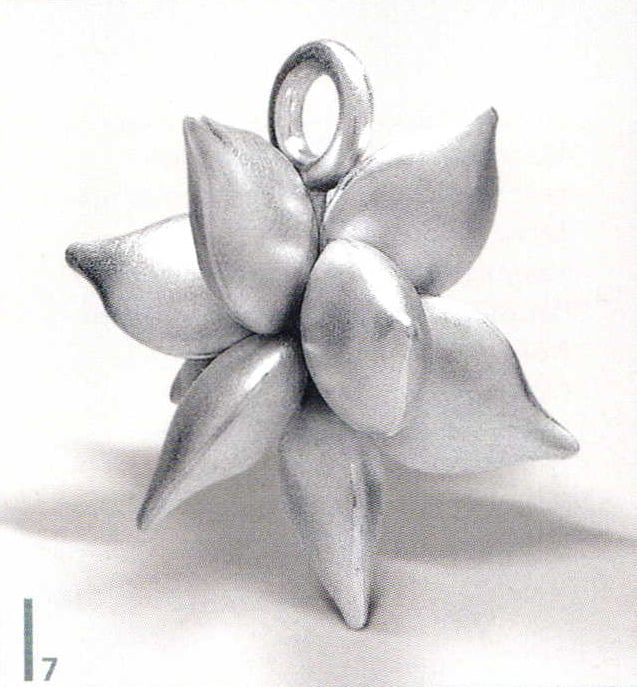The Blossoms’ Magic
3 Minute Read
A flower in your hair is perhaps the most spontaneous and cheerful moment of decorating. You can find them as ornaments on virtually any object in everyday life. Classical modernism suspected flower motifs of superficiality and banned them. But now they are celebrating a carefree and colorful renaissance.
She loves me, she loves me not, she loves me… laminated blossom leaves from Gijs Bakker shaped into necklaces have become the classic among the jewelry avant-garde. Artists like Norman Weber, Margaret West or Susanne Klemm have followed up various ways to transform the blossom motif into 2- dimensional jewelry with state-of-the-art digital printing and photographic or painting techniques. Its figurative language is photorealistic or subtly abstracted to abandon handed down flower symbols and find its way to personal metaphors. Or it tells "private myths" from childhood like the House and Garden brooch series from Norman Weber.
A series of works with their floral forms moves on the thematic interface between naturalness and artificiality. Helen Britton designs heavenly gardens in dislocating coloration and Terhi Tolvanen observes nature precisely to translate foreign universes of forms of cactuses and other succulent species into jewelry. She uses very natural materials such as silk, wood and minerals Ulrike Hamm elicits paper-thin sheet layers from the resistant natural product of parchment to tame them into airy lightweight bundles like a freshly picked bouquet. It's especially artificial materials such as plastic and artificial resins that are suited to plastic work Sally Marsland models jewelry as portable art from a blend of car-filler and graphite pigments. With her different approaches, she's also involved in a dialog with nature fluctuating between vague intimations and specifically developing typical features of the form of a blossom. Doris Betz experimented with hosta glass, a transparent plastic, when she was studying in Vienna as an artist in residence. Creations resembling vegetables, some with bizarre shapes, emerge almost as if by accident. She took this material and declared "the transparent and translucent that is suspected to underlie t and can just be seen" to be the theme of her jewelry.
Yu-Chun Chen has a passion for the pure patterns. Blossom twigs intertwine over her brooches in a finely engraved pattern. Jacomijn van der Donk also applies traditional goldsmith techniques to create densely ornamented wire meshes and Robert Baines picks up on the painstaking filigree technique by dipping delicate grid constructions into in luminous red. If it's pleasing, it's also permitted. Multicolor and pleasantly wistful, the modern art of jewelry appeals to the lasting desire for Romanticism and the magic associated with spring. Now, the international galleries for contemporary jewelry are competing with the advancing blossom time in open nature and parks.
by Katja Poljanac
You assume all responsibility and risk for the use of the safety resources available on or through this web page. The International Gem Society LLC does not assume any liability for the materials, information and opinions provided on, or available through, this web page. No advice or information provided by this website shall create any warranty. Reliance on such advice, information or the content of this web page is solely at your own risk, including without limitation any safety guidelines, resources or precautions, or any other information related to safety that may be available on or through this web page. The International Gem Society LLC disclaims any liability for injury, death or damages resulting from the use thereof.
The All-In-One Jewelry Making Solution At Your Fingertips
When you join the Ganoksin community, you get the tools you need to take your work to the next level.
Trusted Jewelry Making Information & Techniques
Sign up to receive the latest articles, techniques, and inspirations with our free newsletter.
